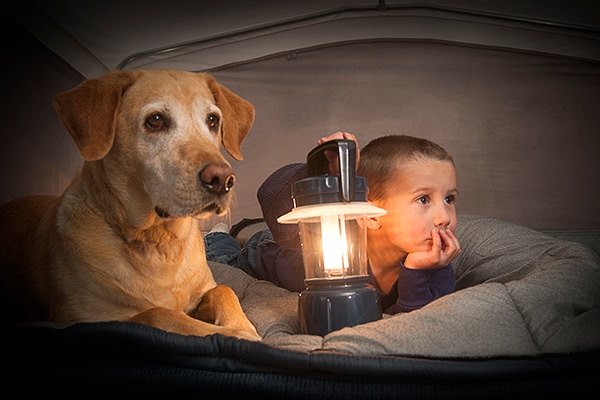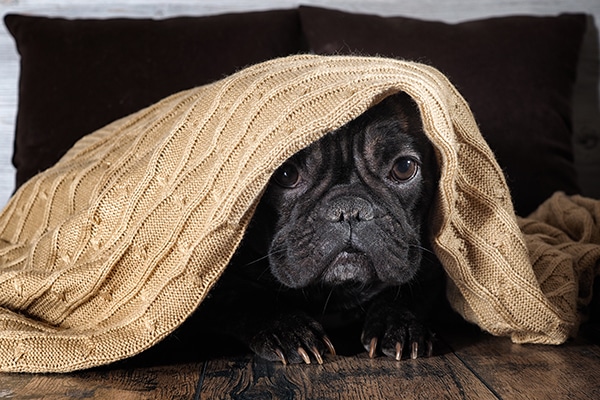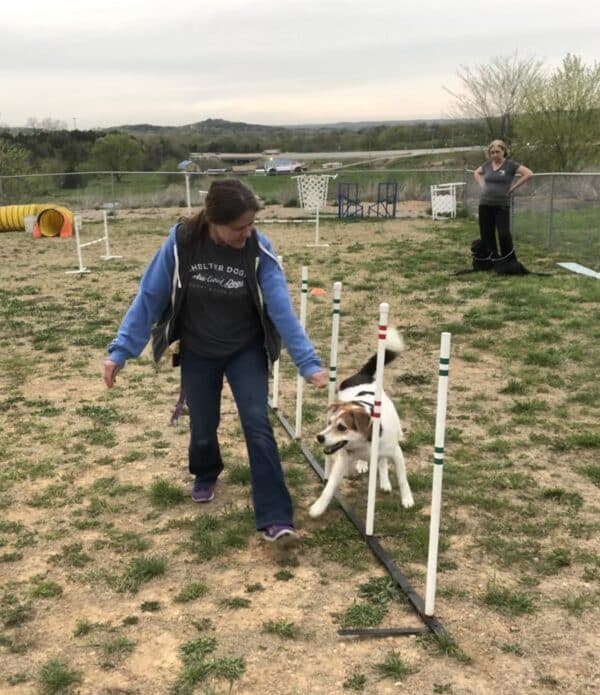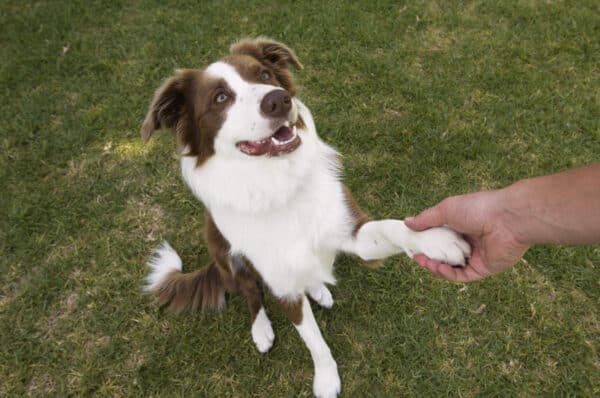What should you do if your dog is scared of everything? Fearful dogs manifest behaviors that many people think are bad behaviors. This includes leash reactivity, aggression, growling, hypervigilance, grabbing toys or your body parts, humping, etc. But these are not bad behaviors, they are the behaviors that dogs use to express their fears and/or anxieties. Fearful dogs who display these behaviors, need your help — don’t try to stop them and most definitely, don’t punish them. We want to change the association of fear to relief, little by little.
What are dogs afraid of and why?

Dogs fear all sorts of things, such as noise, people, children, other dogs, horses, different surfaces, thresholds, vacuum cleaners, new places, cars, bikes, motorcycles, skateboards… and a whole lot more.
There are many reasons why dogs become fearful. It could be neglect, abuse, lack of proper socialization with humans and/or other animals, pushed too much at an early age, physical trauma, pain, emotional trauma, any trauma at a critical period of puppyhood, etc.
Sometimes we know the reasons, but oftentimes we don’t. The bottom line is that helping these dogs overcome fear is about getting them to trust again and making them feel safe. But we can’t do that unless we know how to read their body language and learn what fear and stress look like.
So, how does one go about making a dog who is afraid of everything feel safe and trust again? My best advice is…
- Have no expectations.
- Go slow; as slow as the dog needs to go, to keep the fear factor/behaviors from manifesting or escalating to the point that they hit their threshold.
- Learn what the fearful dog’s triggers are and give her the skills to feel safe in those trigger situations.
Ways to build trust to create safety if your dog is scared of everything
-
- Learn how to read dog body language so that you can understand the emotions underneath the ways dogs express fear. Observation is key to understanding dogs.
- Learn how your own behavior, body language and responses either quell or exacerbate your dog’s behaviors. If you are not aware of how you are acting, you stand little chance at helping a fearful dog. Do you react by yelling or chasing your dog if he’s playfully biting your pants or behaving in any manner you think is bad? These aren’t bad behaviors, they are ways that dogs tell us that they are fearful or angry, so how you respond, not react, will help your dog become less fearful. Punishment most often makes dogs more afraid, backfiring on the goal you are trying to achieve — to help your dog feel more safe in his world.
- Find out what motivates your dog. We will use these motivational tools to change the association from fear to relief, over time. Some will do anything for food, while others will do anything for a Frisbee, and still others will go crazy for a game of tug-o-war. I recently worked with a dog who was petrified of leaf blowers. He bit the gardener out of fear. Any time he saw or heard a blower, he went berserk on the leash, barking and lunging at the person holding the blower. I knew he loved playing Frisbee. I bought a cheap blower at a yard sale and left it in my yard while playing Frisbee. Then I fed his meals right on the blower. Then I turned it on for a second and threw the Frisbee, then 5 seconds, then 10 seconds and so on. Within 5 minutes, I left the blower on while we played Frisbee. Don’t underestimate the power of play in overcoming fear.
- Set a foundation of activities that create a bond between you and your dog. Teach obedience cues and play with your dog — fetch, tug-o-war, Frisbee, agility, etc. This foundation is the groundwork that will help your dog feel safe as she moves through her world. These activities not only build trust, they also build confidence as well. Have fun!
- Start small and stay on familiar turf. While setting a solid foundation through teaching cues, games and play, you are strengthening your bond so that when you do move out into the world, your dog will anticipate the good things he’s learned to enjoy and be less and less triggered. This will in turn allow him to feel less anxious and fearful. These opportunities for continued positive reinforcement can liberate your dog from her fears, over time.
- Touch and/or massage when a dog is feeling afraid will go a long way in comforting her and helping to alleviate her fear.
- Some dogs benefit from medications, but if you choose to look into this, please only take the advice from a veterinary behaviorist, not just a general practice veterinarian. You will need to work with a positive reward trainer at the same time, too. Doing one without the other will not be sufficient nor as effective.
A final word if your dog is scared of everything
Remember, you can’t reinforce fear. Behaviors can be reinforced, but emotions can’t. So, go ahead, comfort your dog. Being your dog’s advocate is the most important thing you can do for your dog, so go at his pace and enjoy the journey. The benefits are boundless.
Read more about dog training on Dogster.com:
- What to Do to Stop Dog Chewing
- 7 Ways to Turn Walking the Dog Into a Workout
- How to Certify Your Dog as a Therapy, Search or Rescue Service Dog
Jill Breitner is a professional dog trainer and dog body language expert loving and living her life on the west coast, USA. She is the author of Dog Decoder, a smartphone app about dog body language. Jill has been teaching gentle handling/basic husbandry skills to clients and their dogs for 40 years, to be your pet’s advocate for a happier and stress-free life. Join Jill on her Dog Decoder Facebook page.
Featured Image Credit: kozorog | iStock / Getty Images.





